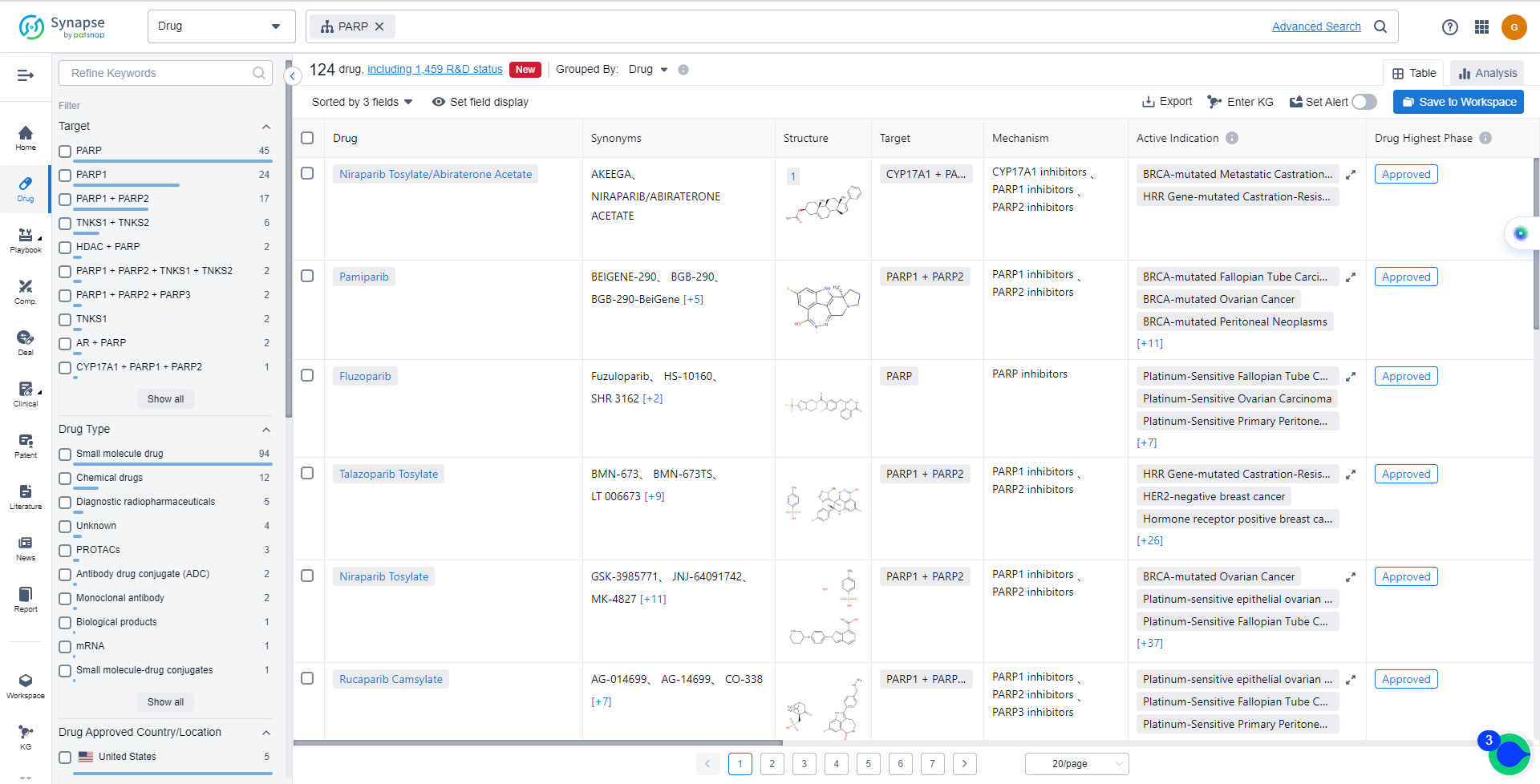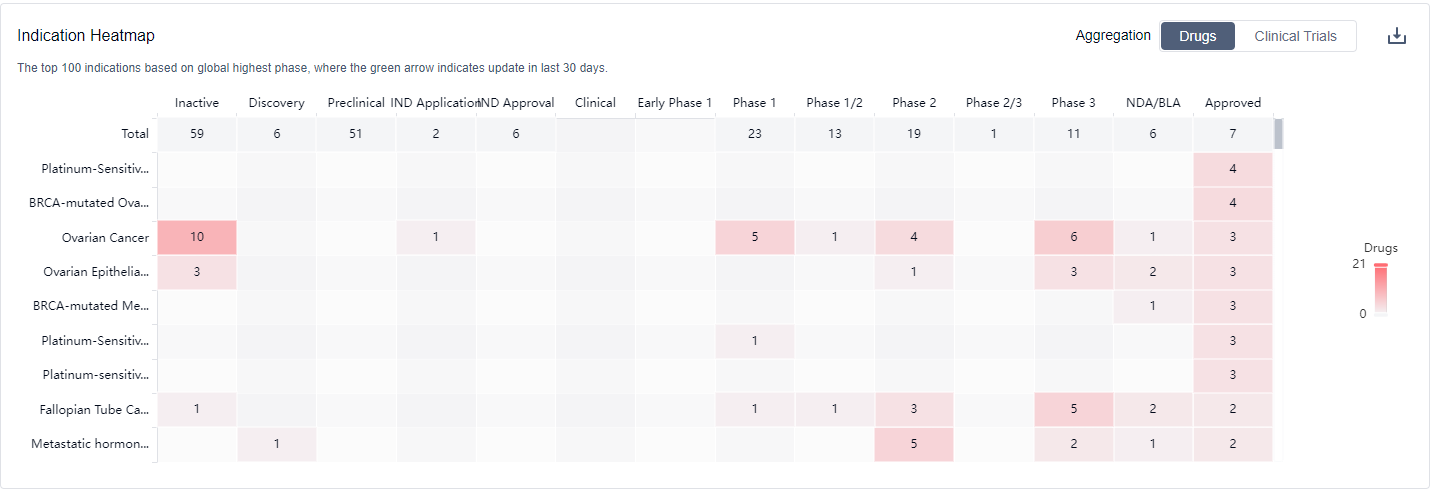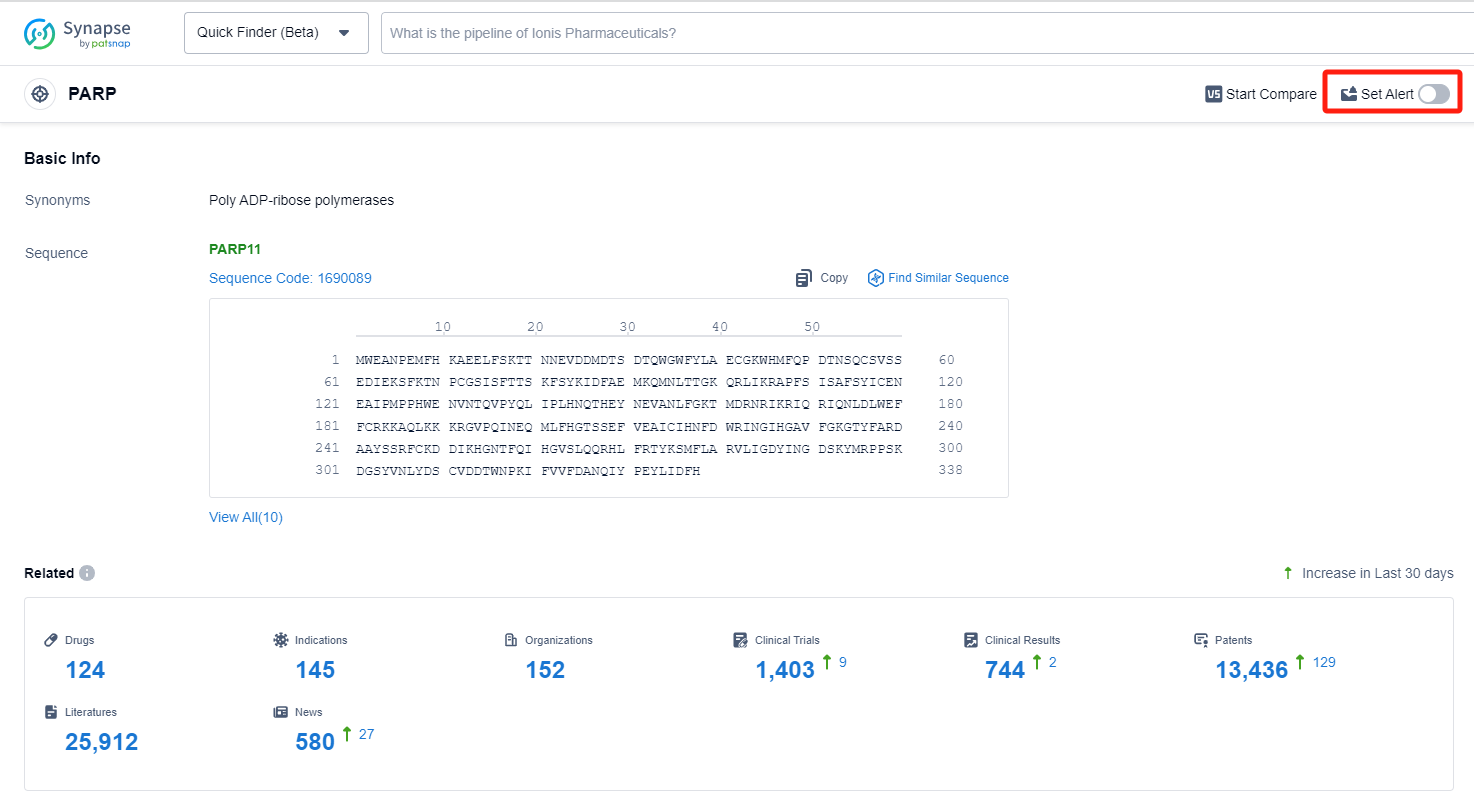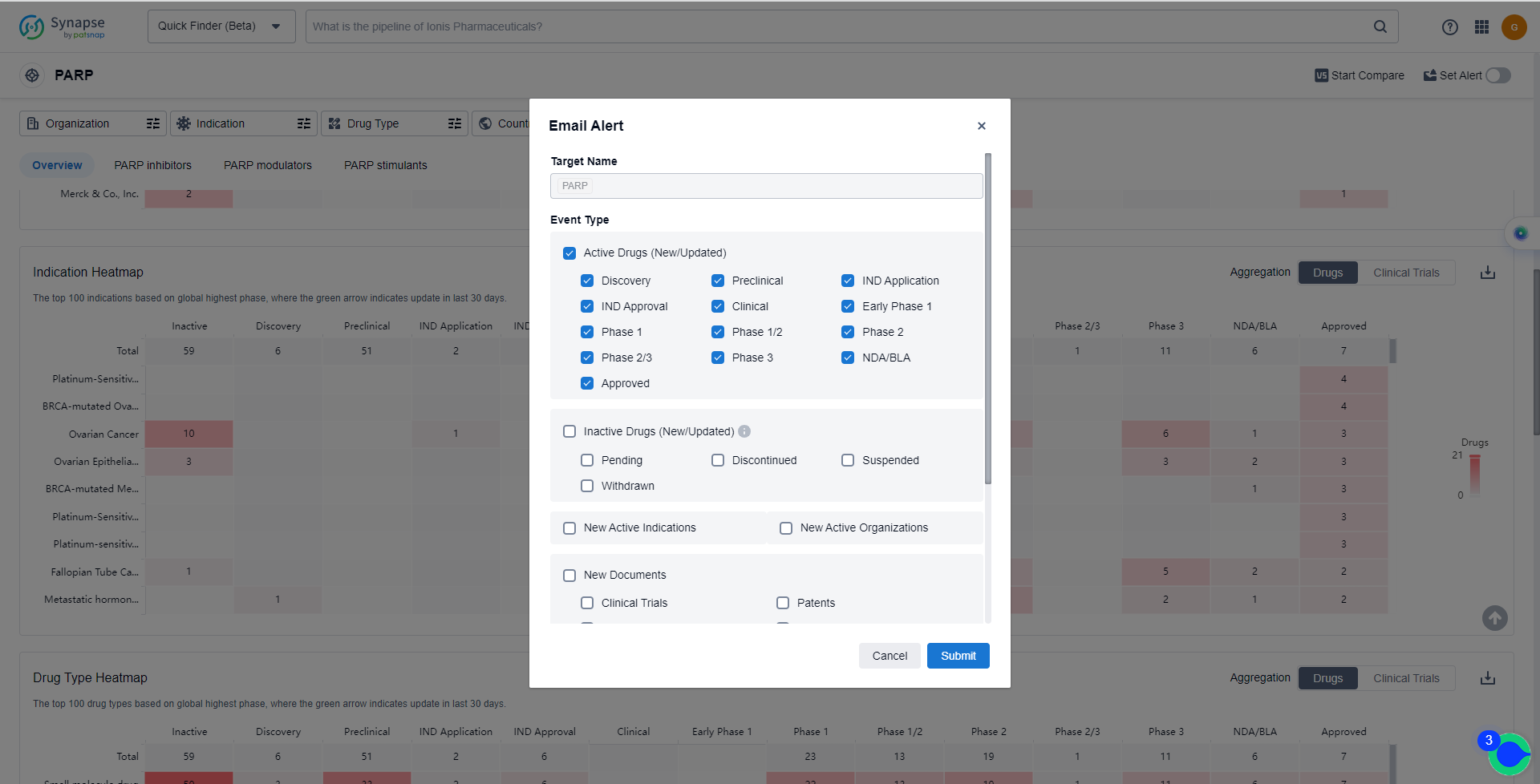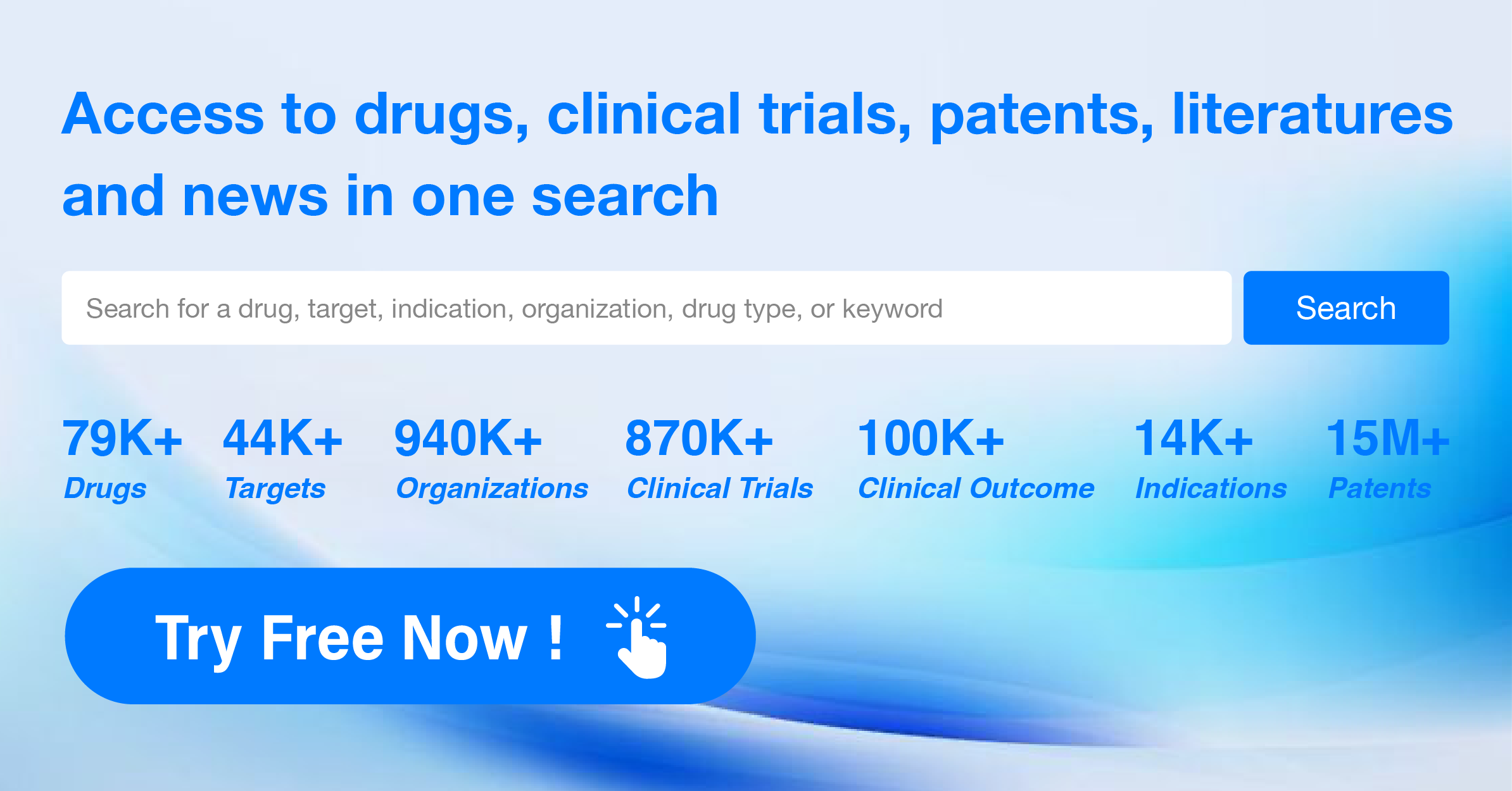What are PARP inhibitors and how do you quickly get the latest development progress?
PARP (Poly ADP-ribose polymerase) is an enzyme that plays a crucial role in DNA repair and maintenance in the human body. It is involved in the detection and repair of DNA damage caused by various factors such as radiation, chemicals, and oxidative stress. PARP helps in the recruitment of repair proteins to damaged DNA sites, facilitating the repair process. Additionally, PARP also regulates other cellular processes like gene expression, cell death, and inflammation. Understanding the role of PARP has led to the development of PARP inhibitors, a class of drugs used in cancer treatment to selectively target cancer cells with defective DNA repair mechanisms.
The development of PARP inhibitors began in the late 20th century, with the understanding of the role of PARP in DNA repair processes. The first generation of PARP inhibitors showed promise but had limitations due to poor oral bioavailability and a lack of selectivity. The second generation of PARP inhibitors, including olaparib, rucaparib, and niraparib, demonstrated increased potency and selectivity for PARP and improved pharmacokinetic properties. These inhibitors have been approved for use in ovarian cancer and breast cancer patients with specific genetic mutations, such as BRCA1 and BRCA2.
The analysis of the target PARP in the pharmaceutical industry reveals a competitive landscape with several companies making significant progress in R&D. AstraZeneca PLC, Pfizer Inc., GSK Plc, and Johnson & Johnson have the highest stage of development on this target. The approved drugs under the target PARP indicate successful clinical trials and potential therapeutic benefits for various indications, including ovarian, breast, prostate, and pancreatic cancer. Small molecule drugs are progressing rapidly, indicating intense competition around the innovative drug. China has shown significant progress in the development of PARP inhibitors, highlighting its growing importance in the pharmaceutical industry. Overall, the target PARP presents a promising future for the treatment of various types of cancer.
How do they work?
PARP inhibitors are a type of medication that target an enzyme called poly (ADP-ribose) polymerase (PARP). PARP is involved in repairing damaged DNA in cells. PARP inhibitors work by blocking the activity of PARP, preventing it from repairing DNA damage. This is particularly important in cancer cells because they often have defects in other DNA repair mechanisms, making them more reliant on PARP for DNA repair. By inhibiting PARP, these drugs can cause DNA damage to accumulate in cancer cells, leading to their death.
From a biomedical perspective, PARP inhibitors have been primarily used in the treatment of certain types of cancer, such as ovarian and breast cancer. They have shown promising results, especially in patients with specific genetic mutations, such as BRCA mutations. These mutations impair the ability of cancer cells to repair DNA, making them more susceptible to the effects of PARP inhibitors. PARP inhibitors can be used as a targeted therapy to specifically attack cancer cells while sparing healthy cells.
It is important to note that PARP inhibitors can have side effects, including nausea, fatigue, and an increased risk of developing blood disorders. However, these side effects are generally manageable, and the benefits of treatment with PARP inhibitors often outweigh the risks in eligible patients. Ongoing research is being conducted to explore the potential of PARP inhibitors in other types of cancer and to optimize their use in combination with other treatments.
List of PARP Inhibitors
The currently marketed PARP inhibitors include:
- Niraparib Tosylate/Abiraterone Acetate
- Pamiparib
- Fluzoparib
- Talazoparib Tosylate
- Niraparib Tosylate
- Rucaparib Camsylate
- Olaparib
- Senaparib
- AZD-5305
- TQB-3823
For more information, please click on the image below.
What are PARP inhibitors used for?
PARP inhibitors are used in the treatment of certain types of cancer, such as ovarian and breast cancer. For more information, please click on the image below to log in and search.
How to obtain the latest development progress of PARP inhibitors?
In the Synapse database, you can keep abreast of the latest research and development advances of PARP inhibitors anywhere and anytime, daily or weekly, through the "Set Alert" function. Click on the image below to embark on a brand new journey of drug discovery!
